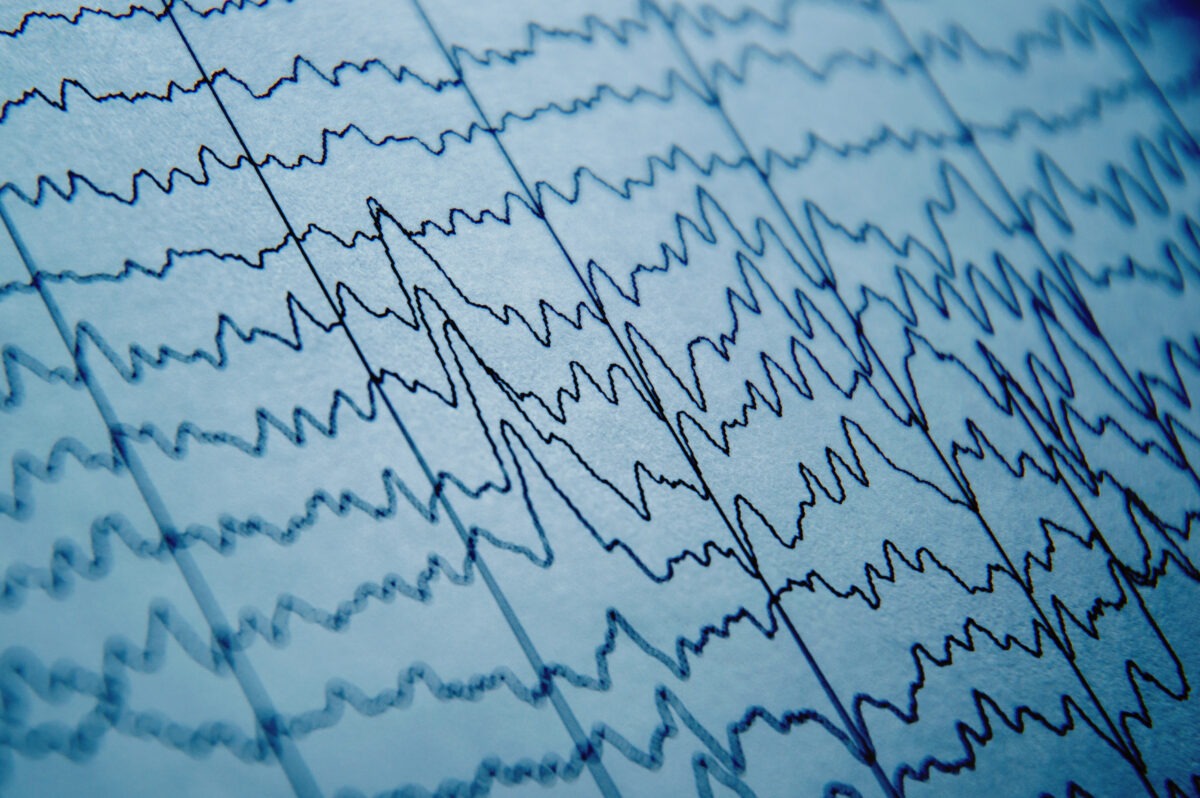Machine Learning to Predict Anesthesia Depth from EEG

Depth of anesthesia describes a patient’s response to general anesthesia. By measuring a patient’s physiological factors, anesthesiologists estimate depth of anesthesia to administer correct amounts of anesthesia. Recent medical research has proposed adding patient’s brain activity to the list of measured factors. One relevant method of monitoring brain activity is electroencephalography (EEG), a non-invasive technique. The proposed introduction of EEG data to the anesthesiologist’s toolkit is thought to offer better outcomes for patients but presents novel challenges around data analysis. However, unlike other forms of physiological data, such as heart rate or blood pressure, EEG data is intrinsically complex. Previous attempts to use EEG data involved computing a simple index. However, these indices did not necessarily lead to improved patient outcomes [1]. More recently, researchers have advocated for the use of machine learning (ML) models to predict depth of anesthesia from EEG data. These specially designed ML models take EEG data as input, apply a series of data transformations, and categorize the patient as “Conscious”, “Unconscious”, etc. [1][2][3]. By “training” these models on a dataset of EEG data and depth of anesthesia as determined by a thorough set of other factors, data scientists can provide anesthesiologists with a model that classifies data across a variety of settings.
However, the use of ML models does not promise the creation of one model that can predict depth of anesthesia in all possible scenarios. For example, the administration of ketamine causes unique EEG fluctuations. If an ML model is not trained with EEG data from ketamine-administered patients, the model will perform poorly when applied to ketamine-administered patients in a clinical setting. In one study, researchers found that such specific training did improve model accuracy [4]. In general, if a drug causes abnormal EEG patterns, a specialized model for that drug should be used.
Similarly, a per-patient approach might yield better outcomes for individual patients. One study found that older patients have less predictable EEG patterns, consistent with the medical literature on sleep [5]. Another study examined EEG patterns in patients with traumatic brain injury, confirming an intuition that EEG is less reliable when a patient’s brain is injured [6]. In both studies, researchers trained a model using data specifically from the studied patient group, resulting in more accurate models. A third study examined the unique EEG patterns of newborns [7]. Unlike the previously mentioned studies, the ML model was trained using data from newborn mice, not newborn humans. To improve patient outcomes, it is critical that patient groups with unique EEG patterns are not overlooked.
The use of EEG data by anesthesiologists presents considerations beyond the accuracy and applicability of ML models. For example, the development of specialized, fast, and energy-efficient computer hardware allows ML models to predict depth of anesthesia in real time, as EEG data arrives from an anesthetized patient [8][9]. Such hardware works for the simplest kinds of ML models, but future research will develop hardware that will allow more complex models to enter the clinical setting. More broadly, comparative studies of EEG data alongside other physiological data will determine the added value of EEG-based predictions. These clinical comparisons can also pave the way for new kinds of anesthesia depth predictions, greatly improving outcomes for patients under anesthesia.
References
[1] J. H. Abel, et al. Machine Learning of EEG Spectra Classifies Unconsciousness During GABAergic Anesthesia. PLOS One 2021. DOI:10.1371/journal.pone.0246165. [2] Y. Gu, et al. Use of Multiple EEG Features and Artificial Neural Network to Monitor the Depth of Anesthesia. Sensors 2019; 19: 11. DOI:10.3390/s19112499. [3] Q. Liu, et al. Spectrum Analysis of EEG Signals Using CNN to Model Patient’s Consciousness Level Based on Anesthesiologists’ Experience. IEEE Access 2019. DOI:10.1109/ACCESS.2019.2912273. [4] K Kashkooli, et al. Improved Tracking of Sevoflurane Anesthetic States with Drug-specific Machine Learning Models. Journal of Neural Engineering 2020; 17: 4. DOI:10.1088/1741-2552/ab98da. [5] M. Kreuzer, et al. Spectral and Entropic Features Are Altered by Age in the Electroencephalogram in Patients under Sevoflurane Anesthesia. Anesthesiology 2020; 132: 5. DOI:10.1097/ALN.0000000000003182. [6] A. Sanz-García, et al. Potential EEG Biomarkers of Sedation Doses in Intensive Care Patients Unveiled by Using a Machine Learning Approach. Journal of Neural Engineering 2019; 16: 2. DOI:10.1088/1741-2552/ab039f. [7] M. Chini, et al. Neural Correlates of Anesthesia in Newborn Mice and Humans. Frontiers in Neural Circuits 2019; 13. DOI:10.3389/fncir.2019.00038. [8] W. Saadeh, et al. Design and Implementation of a Machine Learning Based EEG Processor for Accurate Estimation of Depth of Anesthesia. IEEE Transactions on Biomedical Circuits and Systems 2019; 13: 4. DOI:10.1109/TBCAS.2019.2921875. [9] F. H. Khan, et al. A Patient-Specific Machine Learning based EEG Processor for Accurate Estimation of Depth of Anesthesia. IEEE Biomedical Circuits and Systems Conference 2016. DOI:10.1109/BIOCAS.2018.8584828.